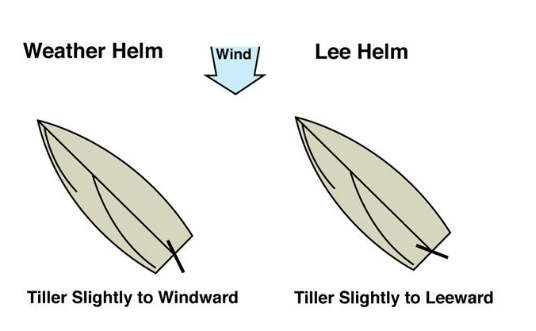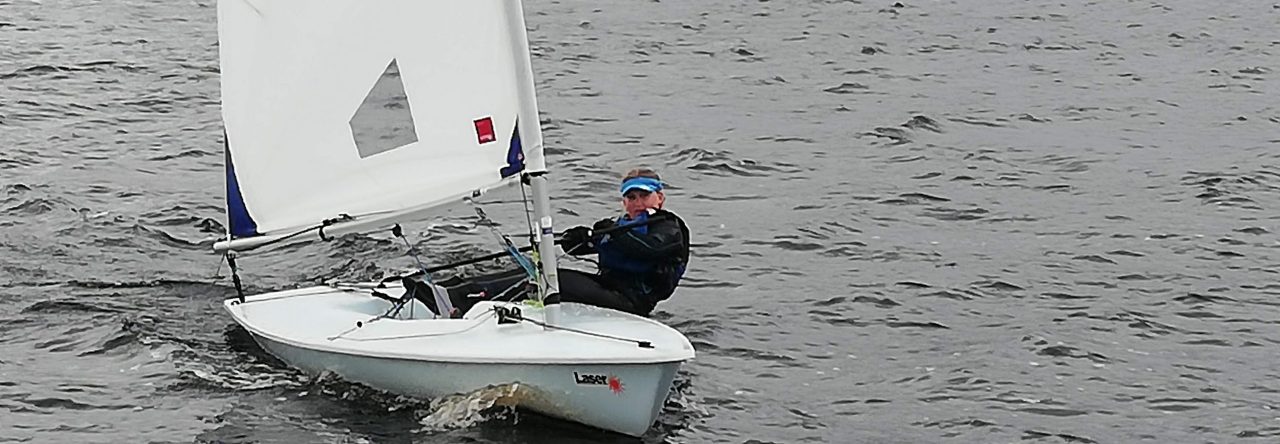RS Feva Rig setup, Upwind Speed

Setting up a Feva to go fast upwind should be no secret.
In the below video Tim Rush explains two methods on how to set your rig up, but to me what is important is what effect do these setups have on my boat.
In high wind, Tilda and I could not keep the boat flat compared to the top sailors. We have good speed and hight, but as they were flatter they could hold their windward ground.
What I have found is they had more mast rake. More mast rake sends the centre of effort aft so in the gusts, the boat is then able to climb to weather naturally rather than the helm having to push the tiller (brake) away to take the hight. Also with more kicker on, the top of your mast moves aft also bringing the centre of effort aft.

(CLR) Centre of Lateral resistance (CE) centre of effort

By raking the mast back we also have more room for the mast to bend giving us a flatter sail, while moving the leech of the jib away from the main (opening the slot). Downhaul also helps the leech of the main twist off in the gusts rather than the leech standing up heeling us over with more sideways pressure on the centreboard (leeway).
Rig tension is also very important to keep the forestay straight. Less rig tension means the forestay can sag making the jib fuller, therefore, reducing the ability to point high. The mainsheet also helps keep the forestay straight, but you do not want to rely on the main for rig tension as we still need to ease the main in the gusts while maintaining rig tension and a straight forestay.
RS Feva Setup with Tim Rush
- Rake Mast
- Pull lots of kicker on
- Lots of rig tension
- Flatten sail by bending the mast
- Outhaul on hard
- Hike hard
- adjust your shroud pins down for more mast rake
RS Feva Hiking
As demonstrated by Tom and Rupert, 2018 European champs hiking is the other secret of upwind speed.
Hike hard and try to limit the in and out body movement to balance the boat. The helm should be able to keep the crew hiking (boat balanced) in a breeze by pointing higher and lower on the jib.
Every time you move into the centre of the boat you effectively push the boat (centreboard) to leeward. When the boat heels it slides to leeward.

Last year we tested this with two RS Tera Pros and found the boat that was heeling over also tried to point as high as the flatboat, but by doing so heeled over even more and went sideways faster. Prior to trying to point high, the boat that was heeled over was, in fact sailing with the same hight, but slowly slipping to leeward of the flatboat.
All of the above points make very little difference in regards to speed and hight individually. But when you add them all together, your upwind speed and pointing ability should improve.
